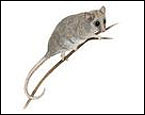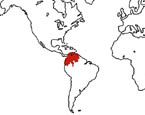|
Dusky
Caenolestid
(Caenolestes fuliginosus) |
||||
|
|
Physical
characteristics and distribution
|
|
They hunt in the early evening and at night; they are mostly nocturnal. They use their long vibrissae (whiskers) and well-developed sense of hearing to locate their prey. They are mainly insectivorous, and can use their incisors to probe in search of insects. However, they are also known to hunt and kill other small vertebrates and earthworms for food. Even small seeds have been found in the digestive tracts. Breeding
season is believed to be early July, as specimens trapped in
August were suckling young. |
|
Description
of the brain
|
|
Animal
source and preparation
|
|
All
specimens collected followed the same preparation
and histological procedure.
|
Other Related Resources (websites and publications)
List of Specimens | Explore Collections | Brain Sections | Brain Evolution | Brain Development | Brain Circuitry | Brain Functions | Location and Use | Related Web Sites | Contact Us | Search MSU Database | Personnel | Home



